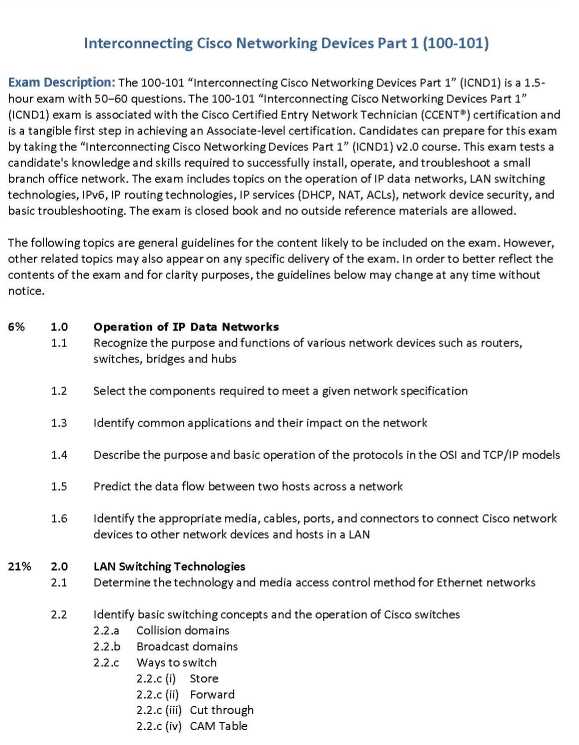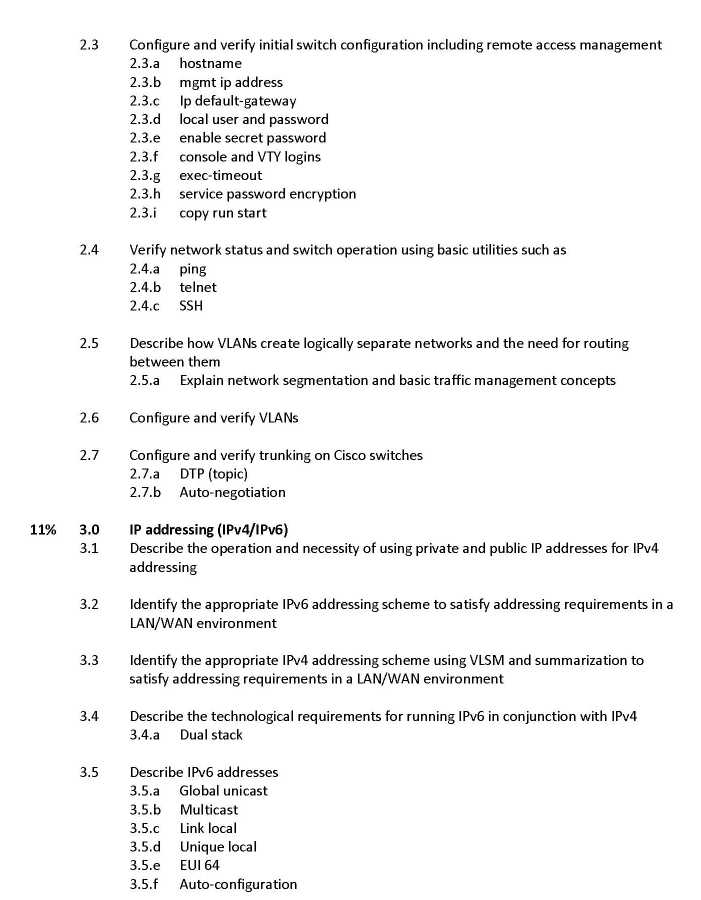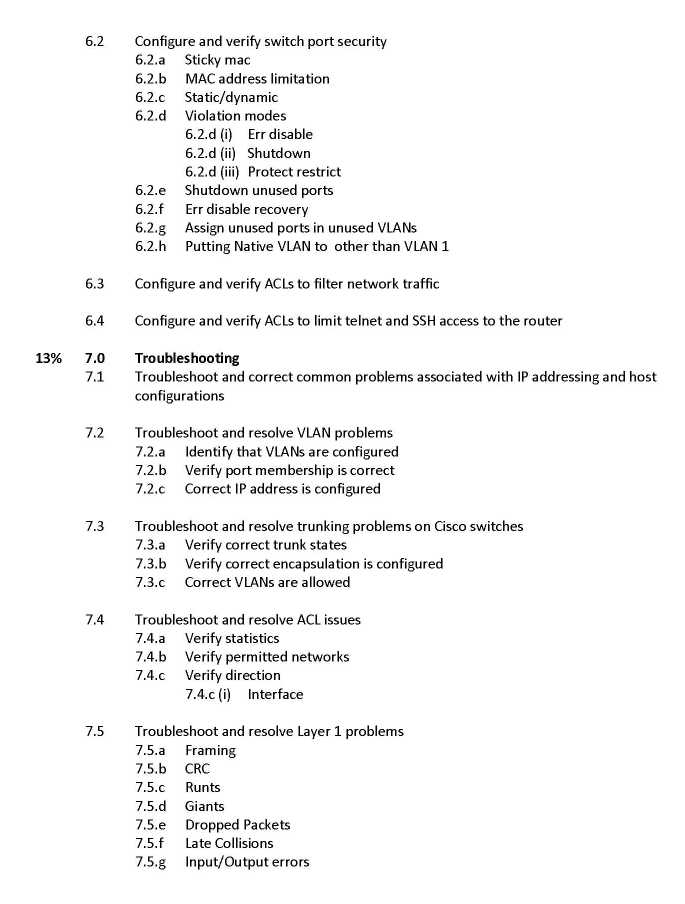|
#2
21st December 2015, 05:49 PM
| |||
| |||
| Re: ICND1 Syllabus
As you want to get the syllabus of Interconnecting Cisco Networking Devices Part 1 so here is the information of the same for you: Syllabus of Interconnecting Cisco Networking Devices Part 1: 1.0 Operation of IP Data Networks 1.1 Recognize the purpose and functions of various network devices such as routers, switches, bridges and hubs 1.2 Select the components required to meet a given network specification 1.3 Identify common applications and their impact on the network 1.4 Describe the purpose and basic operation of the protocols in the OSI and TCP/IP models 1.5 Predict the data flow between two hosts across a network 1.6 Identify the appropriate media, cables, ports, and connectors to connect Cisco network devices to other network devices and hosts in a LAN 2.0 LAN Switching Technologies 2.1 Determine the technology and media access control method for Ethernet networks 2.2 Identify basic switching concepts and the operation of Cisco switches 2.2.a Collision domains 2.2.b Broadcast domains 2.2.c Ways to switch 2.2.c (i) Store 2.2.c (ii) Forward 2.2.c (iii) Cut through 2.2.c (iv) CAM Table 2.3 Configure and verify initial switch configuration including remote access management 2.3.a hostname 2.3.b mgmt ip address 2.3.c Ip default-gateway 2.3.d local user and password 2.3.e enable secret password 2.3.f console and VTY logins 2.3.g exec-timeout 2.3.h service password encryption 2.3.i copy run start 2.4 Verify network status and switch operation using basic utilities such as 2.4.a ping 2.4.b telnet 2.4.c SSH 2.5 Describe how VLANs create logically separate networks and the need for routing between them 2.5.a Explain network segmentation and basic traffic management concepts 2.6 Configure and verify VLANs 2.7 Configure and verify trunking on Cisco switches 2.7.a DTP (topic) 2.7.b Auto-negotiation 3.0 IP addressing (IPv4/IPv6) 3.1 Describe the operation and necessity of using private and public IP addresses for IPv4 addressing 3.2 Identify the appropriate IPv6 addressing scheme to satisfy addressing requirements in a LAN/WAN environment 3.3 Identify the appropriate IPv4 addressing scheme using VLSM and summarization to satisfy addressing requirements in a LAN/WAN environment 3.4 Describe the technological requirements for running IPv6 in conjunction with IPv4 3.4.a Dual stack 3.5 Describe IPv6 addresses 3.5.a Global unicast 3.5.b Multicast 3.5.c Link local 3.5.d Unique local 3.5.e EUI 64 3.5.f Auto-configuration 4.0 IP Routing Technologies 4.1 Describe basic routing concepts. 4.1.a Packet forwarding 4.1.b Router lookup process 4.1.c Process Switching/Fast Switching/CEF 4.2 Configure and verify utilizing the CLI to set basic Router configuration 4.2.a Hostname 4.2.b Local user & password 4.2.c Enable secret password 4.2.d Console & VTY logins 4.2.e exec-timeout 4.2.f service password encryption 4.2.g Interface IP Address 4.2.g (i) loopback 4.2.h banner 4.2.i motd 4.2.j copy run start 4.3 Configure and verify operation status of an Ethernet interface 4.4 Verify router configuration and network connectivity using 4.4.a ping 4.4.a (i) Extended ping 4.4.b traceroute 4.4.c telnet 4.4.d SSH 4.4.e Show cdp neighbors 4.5 Configure and verify routing configuration for a static or default route given specific routing requirements 4.6 Differentiate methods of routing and routing protocols 4.6.a Static vs. dynamic 4.6.b Link state vs. distance vector 4.6.c Next hop 4.6.d Ip routing table 4.6.e Passive interfaces (how they work) 4.7 Configure and verify OSPF (single area) 4.7.a Benefit of single area 4.7.b Configure OSPv2 in a single area 4.7.c Configure OSPv3 in a single area 4.7.d Router ID 4.7.e Passive interface 4.8 Configure and verify interVLAN routing (router on a stick) 4.8.a Sub interfaces 4.8.b Upstream routing 4.8.c Encapsulation 4.9 Configure SVI interfaces. Syllabus of Interconnecting Cisco Networking Devices Part 1      |